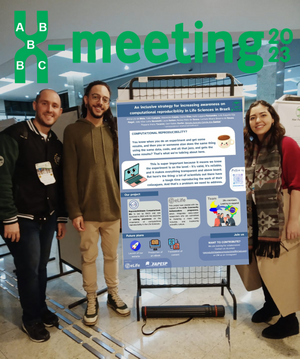It is the preprints era for biology research! And as early career researchers (ECRs), we are more than happy about it. This is because preprints bring a lot of benefits to the scientific environment that are also invaluable for ECRs: Faster communication and evaluation of research, more equity in accessibility to research findings, more open scientific discussions and collaboration possibilities. But like every big transition, technology advances quite rapidly, and it can be challenging to stay up to speed with the latest tools or adapt to the new forms. Some organisations, like Sciety, help you navigate the preprint landscape, making the process of finding, organising and sharing preprints easier for the whole community. This is why we wanted to ask them: What exactly are they doing? Why is it important?, and how can we help them?! Here is what they shared with us:
What is Sciety and how it started?
“Sciety is a tool for helping people, particularly those affiliated with the biomedical and life sciences, navigate the growing preprint landscape”.
The recent rise in the posting of preprints is a big win for science, because results are more often posted early. Nevertheless, it can be a problem for researchers, who are already pressed for time and find it difficult to stay on top of the latest developments in their field. Sciety started as a way of discovering preprints, and any evaluations they may have accrued from a variety of different groups of experts (including overlay journals, traditional editorial boards and automated screening tools). However, we quickly learned that these evaluations, while increasing trust in preprints themselves, were less helpful for promoting discovery. We began to introduce curation features, allowing individuals to group related articles together and share these recommendations with their network.
If you are interested in knowing more about us, we also have a blog section on our website, where you can find more information about our work.
How does the application work?
Sciety uses the EuropePMC search function behind the scenes to return preprints posted to bioRxiv and medRxiv, along with their version information. We then append these results with any evaluations (reviews) we have fetched from external sources, generating an activity stream for each preprint. In order to stay up to date withthe latest preprints in their field, users can follow any or all of the groups whose evaluations we aggregate. This will customise a feed of articles that is continually updated wherever any of these groups evaluate a new preprint.
Does Sciety do any evaluation/reviewing of the pre-prints?
No. Sciety does not carry out the reviews or influence them in any way. Groups act independently to determine their own processes as well as the articles they will evaluate. The authors are always welcome to engage with the Groups directly. An author’s response is sometimes displayed alongside the evaluation. You can take a look at this or this example.
What are the advantages of using Sciety over other platforms?
Sciety is free, open access, and reduces the burden of working across platforms and software in search of preprints. Sciety also provides the opportunity to read evaluations of preprints in one place, as well as share lists of important and timely preprints with peers.
Can anyone have a Sciety account? What are the benefits of having one?
Yes, anyone can have a Sciety account. Currently, we use Twitter as an authentication tool, so you will need to have a Twitter account to use Sciety at the moment. As a user you will be able to follow groups, save articles to read later or share with colleagues, and give feedback on evaluations.
What are the projections of “Sciety” for the future?
In the short to medium term, we are developing our curation features further in response to feedback. For example, soon, users will be able to organise multiple lists and follow others’ lists to stay on top of newly added articles.
In the longer term we anticipate allowing visitors to search for preprints in other servers, as well as offering alternative login methods.
How can we (as readers) help you?
You can help us by:
- Informing your network about our existence!
- Curating your own list of articles to give your network a taste of what can be achieved
- Sharing your Sciety list url with others, spread the word in your social media
- Giving us feedback of your experience of using Sciety to help improve it constantly
About the authors:
Hannah Drury is a Digital Product Manager within eLife, currently working with a small cross-functional team to build Sciety. She is passionate about users and what makes them tick, and is keen to solve problems for the next generation of scientists.
Godwyns Onwuchekwa is the Community and Outreach Manager at Sciety, with remits to advance the engagement and involvement of users. Godwyns has over a decade of experience in community inclusion across sectors.
Follow Sciety on Twitter.








